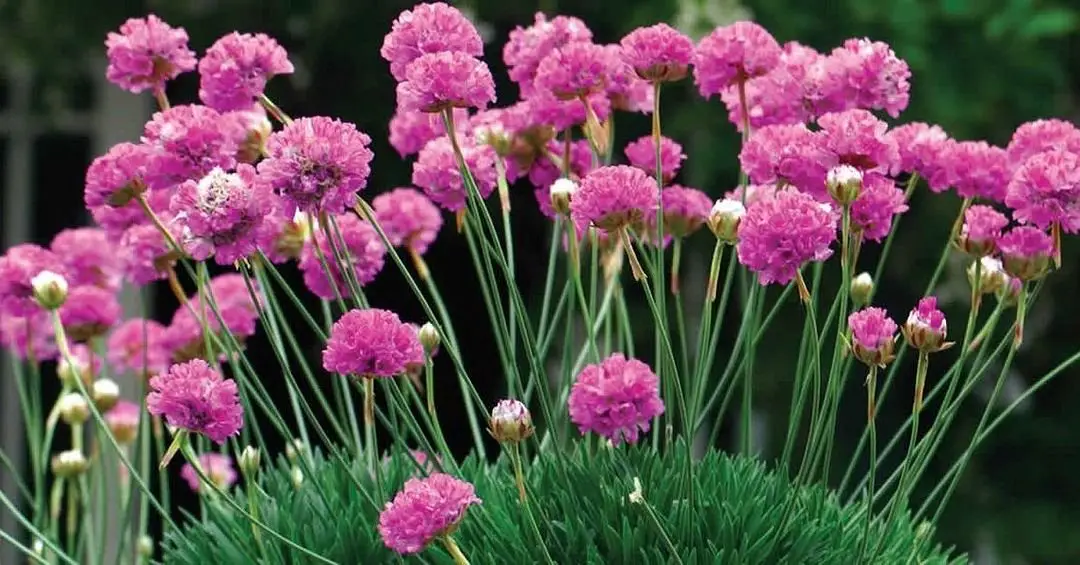Discover the beauty of Armeria flowers! Learn their symbolism, care tips, where to buy seeds, and how to grow them indoors or outdoors. Perfect for USA gardeners.
With over 10 years of gardening experience, I’ve grown countless plants, but few have charmed me as much as the Armeria flower. Often called “thrift” or “sea pink,” this hardy perennial delivers vibrant blooms and thrives in challenging conditions. Whether you’re a newbie or a seasoned gardener, let’s dive into everything you need to know about this delightful plant.
What is the Armeria Flower?

The Armeria flower (scientific name: Armeria maritima) is a low-growing, evergreen perennial native to coastal regions, rocky slopes, and mountain ranges. Known for its tufted grass-like foliage and spherical flower clusters, it blooms in shades of pink, white, red, and even green. Fun fact: The name “Armeria” comes from the Latin word for “clustered,” referring to its tight flower heads!
Symbolism and Meaning
The armeria flower meaning is tied to endurance and sympathy. In Victorian times, it symbolized “admiration from afar,” making it a subtle gift for unspoken feelings. Its resilience in harsh environments also represents strength—perfect for gardeners tackling tough climates!
How to Grow Armeria Flowers
1. Choosing the Right Location
Armeria thrives in outdoor settings with full sun (6+ hours daily) and well-draining soil. If you’re planting in heavy clay, amend it with sand or gravel. I’ve had great success growing them in rock gardens and along pathways—they’re also deer-resistant!
Pro Tip: For indoor armeria flower care, use a terracotta pot with drainage holes and place it near a south-facing window.
2. Planting Armeria Flower Seeds
Start armeria flower seeds indoors 6–8 weeks before the last frost. Sprinkle seeds on moist soil, press lightly (they need light to germinate), and keep temperatures around 65°F. Transplant seedlings outdoors once they’re 3 inches tall.
Where to Buy: Check my guide on starting perennial seeds for more tips.
3. Watering and Feeding
Overwatering is the #1 killer of Armeria! Water deeply but infrequently—only when the top inch of soil is dry. Fertilize sparingly with a balanced 10-10-10 formula in early spring.
Armeria Flower Care Tips
- Flowering Period: Most varieties bloom from late spring to early summer. Some, like Armeria maritima ‘Dreameria’, rebloom if deadheaded.
- Pruning: Trim spent flowers to encourage new growth. Cut back foliage in fall to maintain a tidy appearance.
- Winter Care: In colder zones (below USDA 4), mulch lightly to protect roots.
Common Issues
- Brown Armeria Flower Heads: Usually caused by soggy soil or fungal diseases. Improve drainage and avoid overhead watering.
- Leggy Growth: Too much shade! Relocate to a sunnier spot.
Where to Buy Armeria Flowers
Looking for armeria flower for sale? Here’s where I recommend:
- Online Retailers: Burpee (for seeds), Etsy (for live plants under $300).
- Local Nurseries: Use terms like “armeria flower nearby” in Google searches.
- Specialty Growers: Check American Meadows for unique varieties like red armeria flower or white armeria flower.
Cost: Prices range from 5–5–15 for seeds and 10–10–30 for potted plants.
Armeria in Landscaping and Bouquets
The bouquet armeria flower adds whimsy to floral arrangements. Pair it with lavender or eucalyptus for a rustic look. In gardens, use it as edging, in containers, or as a groundcover. The green armeria flower (a rare variety) is a showstopper in modern landscapes!
Companion Plants: Sedum, creeping phlox, and dianthus.
FAQs About Armeria Flowers
1. When does Armeria flower?
Most bloom from May to June. Deadheading can extend the armeria flowering period into summer.
2. Can Armeria grow indoors?
Yes! Ensure bright light and avoid overwatering.
3. Is Armeria toxic to pets?
No—it’s safe for cats and dogs (ASPCA-approved).
4. What’s the average size of Armeria?
Most grow 6–12 inches tall and wide.
Final Thoughts
From its rich symbolism to its fuss-free care, the Armeria flower is a gem for any garden. Whether you’re planting armeria flower seeds or adding a pop of color with a pink armeria flower, this plant won’t disappoint. For more ideas, explore my article on coastal garden plants.
Happy Gardening!
Ashley Scott
USA Garden Hub

